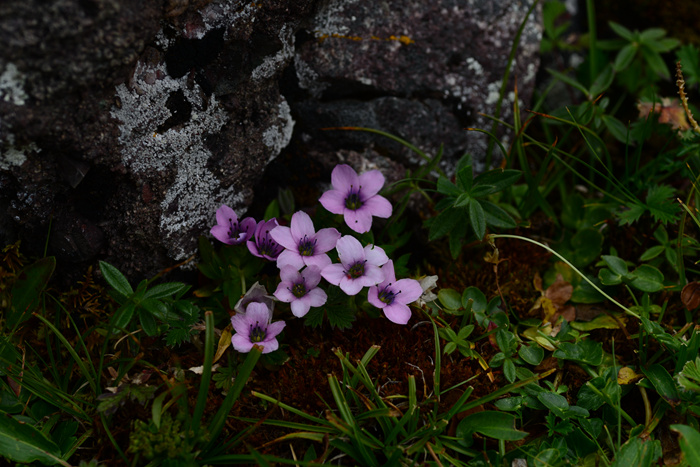- Scientific Name: Shivparvatia forrestii (Diels) Rabeler
- Ref: Phytotaxa 303(3):294. 2017
- Synonyms: Arenaria forrestii Diels; A. forrestii f. roseotincta (W.W.Sm.) C.Y.Wu; A. roseotincta W.W.Sm.; Solitaria forrestii (Diels) Gang Yao
- English Common Name: Forrest’s sandwort
- Chinese Common Name: 西南独缀草 Xīnán dúzhuì∙cǎo, 西南无心菜 Xīnán wúxīn∙cài, 福氏蚤缀 Fú-shi zǎozhuì
- Family: Caryophyllaceae
- Genus: Shivparvatia
- Distribution: Mountains, alpine meadows, swamp meadows, shifting screes, broken rocks, limestone crevices; 2900–5300 m. S Gansu, SE Qinghai, W Sichuan, SE Xizang, NW Yunnan [Nepal].
- Photo: Baima Snow Mt., Yunnan
Herbs perennial. Stems clustered, 1--15 cm, glabrous or sparsely white villous along 1 side. Proximal cauline leaf blade scalelike, 3--4 × 1--1.5 mm; distal cauline leaf blade orbicular-lanceolate or orbicular-ovate, 5--12 × 1.5--3 mm, leathery, glabrous, midvein raised, base narrowed, margin slightly hard, cartilaginous, apex acute. Flower solitary, terminal. Pedicel 0.5--1.5 cm, villous in a line. Sepals 5, yellow, orbicular-lanceolate, 5--8 × 2--3 mm, base narrowed, margin membranous, apex acute. Petals 5, white or pink, obovate-elliptic, 0.7--1.5 cm × 4--6 mm, base narrowed, cuneate, apex obtuse, sometimes truncate or emarginate. Stamens 10; filaments 5--6 mm; anthers yellow. Ovary ovoid, slightly flattened, ca. 2 mm; ovules 6--8. Styles 3, linear, ca. 2.5 mm. Fl. Jul--Aug. (Flora of China)
